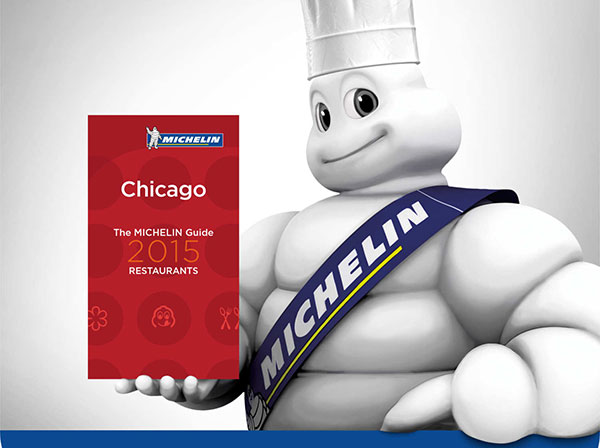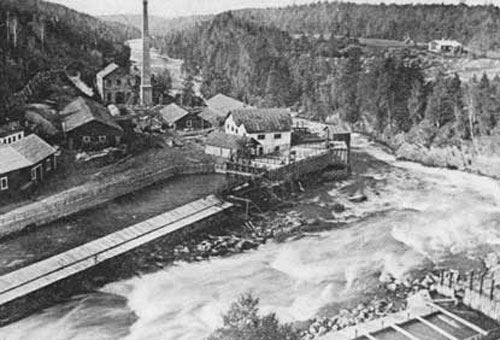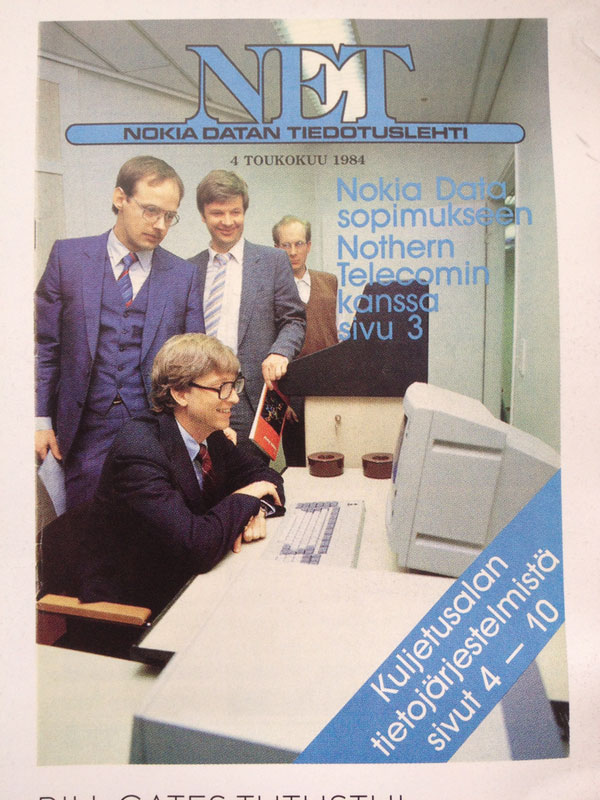Don't Mess With The Michelin Man
How did a tire manufacturer create an essential restaurant guide? And what other unusual side businesses do brand-name companies have? We investigate.

How a tire company became the world's most important corporate restaurant critic
The year was 1900, and the Michelin brothers—Ándre and Édouard—happened to be incredibly early to the birth of the automobile. The space was so new that there were few details about where people could drive with their fancy automobiles. Definitely not a good situation if you're selling tires.
But rather than take this rough situation lying down, the brothers came up with an idea: they would create free guides to offer to French car owners, with the idea that travelers would want to go to these places when rolling around the countryside.
The guide included details about the food and lodging you could find through your travels. This sounds obvious now, but it wasn't back then.
"The Michelin guide turned out to be prescient and inspired," noted Vanity Fair contributor A.E. Hotchner. "This motoring thing wasn’t going to be about what you went in, but where you went to."
And over time, the Michelin Guide became famous for focusing less on the restaurants that you'd find in a specific location and more on the restaurants that you should go out of your way to visit. Its star-rating system—in which a star is handed out only in cases of extreme excellence—makes it among the toughest guides in the world to get into. At this point, the guide has as much to do with tires as David Lynch has to do with the Twin Peaks revival. Clearly, cars were an early influence, but you don't need a vehicle to try out most of these restaurants.
The guide remained a European phenomenon for much of its history, but in recent years the guide has expanded to major U.S. markets like New York. But the guide's age has started to show in recent years. Howso? Simple: Michelin's biases, driven by a bevy of anonymous reviewers with exacting taste, have become more obvious over the years.
"More than half of the restaurants that drew at least two stars could be considered French," a 2005 New York Times article noted at the time the guide first entered the U.S. market. (Oddly, the guide also has a strange bias towards Japanese restaurants.)
The piece by Vanity Fair's Hotchner highlights just how bad the problem has gotten: "Few will criticize the guide publicly. Privately, there are many who despair of its limited scope, its snobbery, its fatty favorites."
But no matter the case, it's one of the few things that can make Gordon Ramsay cry.
"I started crying when I lost my stars," Ramsay said of the loss of the stars for his New York facility, The London. "It's a very emotional thing for any chef. It's like losing a girlfriend. You want her back."
Perhaps there's value to Yelp stars after all.
56
Five unusual product categories run by major corporations
- The Bic corporation, which most people know for its pens, lighters, and razors, also has a sizable watersports product category—which makes things like surfboards, kayaks, and sailboats. Not that pens, lighters, and razors aren't already three random things for a single company to produce.
- Before Nintendo became known for being a family-friendly video game company, it was known for its playing cards in Japan. Its hanafuda cards are still around to this day, but as Kotaku notes, the cards' ties to gambling and organized crime haven't followed through to the present day.
- Also on the video game tip: While Sega actually got its start in arcades—first as a creator of slot machines—its path to success is fairly unusual. Basically, Sega started as an American company called Service Games. Eventually, it relocated its operations to Japan. There were two reasons for the move: First, World War II had made the Japanese market a prime one for growth, and second, the U.S. had banned slot machines, so the company needed to import the machines elsewhere.
- You may think of "batteries" when we say "Energizer," but the company decided to expand its presence into the health and beauty aisles for some reason, starting with its purchase of Playtex in 2007. The company now produces Schick razors, Hawaiian Tropic suntan oil, tampons, and a line of infant care products. The company's incongruent product lines eventually became enough of a problem that the company is currently working to split them apart again.
- Pixar's success as a film studio came only after the company nearly failed due to its early focus on selling insanely expensive supercomputers. The Pixar Image Computer, which initially cost $125,000 and required the purchase of a separate $35,000 workstation to even use, was sold to government agencies and medical facilities. In an effort to show off its capabilities, John Lasseter created graphical demos—demos that eventually led to the company to start making films.

Why Nokia is the perfect example of a corporate chameleon
A couple years back, Microsoft changed the path of what is perhaps Finland's most important economic export.
MS bought the key assets of the tech company Nokia, ending an important chapter in the company's history.
But it was far from the first chapter. See, Nokia didn't start out as a phone company, much less one that could be easily morphed into a cog of Microsoft's mobile strategy. It started out as a paper company. No, really.
The year was 1865, and the guy who launched the company was Fredrik Idestam. He built the first mill that year. The second mill he created, built in 1871, was on the Nokianvirta river—hence the company's name.
Over the years, the company evolved into a complex corporate conglomerate, taking on product lines as diverse as rubber production, electricity, forestry, radio communications, and chemicals. At one point, Nokia even produced a line of desktop computers called the MikroMikko. Here's a photo of Bill Gates using a Nokia computer, in a definite prelude to the Microsoft acquisition:

But eventually, the company decided that telecommunications was where it's at. From their website, they explain:
"In the early 1990s, we made a strategic decision to make telecommunications our core business, with the goal of establishing leadership in every major global market. Basic industry and non-telecommunications operations—including paper, personal computer, rubber, footwear, chemicals, power plant, cable, aluminum and television businesses—were divested between 1989 and 1996. By 1998, Nokia was the world leader in mobile phones, a position it enjoyed for more than a decade."
Then Google and Apple came along and took over that position quicker than you can say hyppytyynytyydytys.
So maybe it only makes sense that the most important company Finland ever created has been assimilated into Microsoft. It's a straight-up shape-shifter, right?
Many of the technology products we use every day were borne of last-minute corporate shifts. Twitter, Instagram, and Slack weren't the first ideas that their founders came up with—in fact, they were only formed when it became clear the their podcasting tools, location check-in apps, and multiplayer games (respectively) were likely to fail in the market. Rather than give up, these companies figured out ways to turn their bad situation into a completely different, new one.
But this kind of situation—"failing fast," as the hipsters call it—is far from new. Companies like Nokia and Nintendo were reinventing themselves far before anyone cared about whether your Instagram photo got 100 likes.
Sometimes you need to widen your perspective to see the real potential.
:format(jpeg)/2017/09/michelin--1-.gif)
/2017/09/michelin--1-.gif)

/uploads/ernie_crop.jpg)